Visistha Advaita, a prominent school of Vedanta philosophy propagated by the revered sage Sripad Ramanujacharya, offers profound insights into the relationship between matter, energy, and consciousness. This philosophical framework, also known as Qualified Non-Dualism, bridges the gap between the absolute unity of Brahman (the ultimate reality) and the diversity of the world. By exploring the nature of matter, energy, and consciousness and their interconnectedness, Visistha Advaita provides a comprehensive understanding of reality.
Visistha Advaita Philosophy: The Qualified Non-Dualism
Visistha Advaita, articulated by the eminent philosopher Sripad Ramanujacharya, represents a distinctive school of Vedanta philosophy that synthesizes the concepts of unity and diversity. This philosophical framework, known as Qualified Non-Dualism, posits that Brahman, the ultimate reality, is fundamentally non-dual and indivisible, yet manifests in the diverse and pluralistic world we perceive. Central to this philosophy is the concept of Sarira-Sariri Bhava, which delineates the relationship between the body (Sarira) and the embodied soul (Sariri). According to Visistha Advaita, Brahman functions as the substratum (Sarira) that supports and manifests in various forms, encompassing both sentient beings and insentient matter.
Elaboration on Key Shlokas in Visistha Advaita Philosophy
Visistha Advaita, as expounded by Sripad Ramanujacharya, is rich with philosophical insights that are encapsulated in various shlokas. These shlokas illuminate the intricate relationships between Brahman, matter, energy, and consciousness. Below are explanations of three significant shlokas that reflect the core principles of Visistha Advaita.
śrutirvividhā nṛṇām (श्रुतिर्विविधा नृणाम्)
Translation and Interpretation: “श्रुतिर्विविधा नृणाम्” (śrutirvividhā nṛṇām) translates to “The scriptures are diverse for humans.” This shloka suggests that the Vedas, the foundational texts of Hindu philosophy, provide different teachings tailored to the varied capacities and spiritual paths of individuals.
Philosophical Significance: This concept is central to Visistha Advaita’s inclusivity and acknowledges the multiplicity of human experience and understanding. The Vedas contain a multitude of teachings and practices to accommodate the diverse nature of human society. This diversity is not seen as contradictory but as a reflection of the different ways in which Brahman can be approached and understood.
Connection to Matter and Energy: In the context of matter and energy, this shloka highlights the idea that the diverse manifestations we observe in the material world are rooted in the same ultimate reality, Brahman. Just as the Vedas offer varied teachings for different individuals, the material world presents varied forms and energies, all of which are expressions of Brahman. This reinforces the Visistha Advaita view that while the manifestations are many, their source remains one and unified in Brahman.
brahmaṇo hi pratiṣṭhāham (ब्रह्मणो हि प्रतिष्ठाहम्)
Translation and Interpretation: “ब्रह्मणो हि प्रतिष्ठाहम्” (brahmaṇo hi pratiṣṭhāham) means “For I am the foundation of Brahman.” This line is drawn from Lord Krishna’s discourse in the Bhagavad Gita, where it is interpreted by Ramanujacharya to signify that the Supreme Self (Krishna) is the foundation upon which Brahman is established.
Philosophical Significance: This shloka emphasizes the foundational relationship between the Supreme Self (Paramatman) and the individual self (Atman). In Visistha Advaita, the individual self is not independent but is sustained by and rooted in the Supreme Self. This aligns with the philosophy’s view that all individual souls and the material world are real and dependent on Brahman, which is the ultimate reality.
Connection to Matter and Energy: This shloka underscores that the material world and all forms of energy are contingent upon Brahman. The physical universe, with its myriad forms and forces, is grounded in Brahman, the ultimate substratum. This foundational aspect of Brahman means that all existence, whether sentient or insentient, is a manifestation of Brahman’s divine potency. Thus, the diversity of the material world is seen as an expression of the singular, unifying essence of Brahman.
antaryāminamīśānam (अन्तर्यामिनमीशानम्)
Translation and Interpretation: “अन्तर्यामिनमीशानम्” (antaryāminamīśānam) translates to “The inner ruler, the controller.” This shloka describes God as the inner ruler who resides within and controls all beings.
Philosophical Significance: The concept of Antaryamin, the inner controller, is a key tenet of Visistha Advaita. It posits that Brahman resides within every soul as the inner ruler and controller. This inner presence of Brahman in all beings underscores the intimate and personal relationship between the individual soul and the divine.
Connection to Matter and Energy: This shloka highlights the pervasive presence of consciousness (Chit) within all matter and energy. Brahman, as the inner ruler, is the consciousness that animates and controls every aspect of the universe. In sentient beings, this consciousness is more apparent, manifesting as self-awareness and cognition. In insentient matter, it remains latent but still inherent as the divine principle that sustains and orders the cosmos. This underscores the unity of consciousness that pervades all forms of matter and energy, reflecting the non-dual nature of reality as envisaged by Visistha Advaita.
These shlokas encapsulate fundamental aspects of Visistha Advaita philosophy. śrutirvividhā nṛṇām highlights the inclusive and accommodating nature of Vedic teachings, mirroring the diverse manifestations of matter and energy in the world. brahmaṇo hi pratiṣṭhāham underscores the foundational role of Brahman as the ultimate source of all existence. antaryāminamīśānam emphasizes the pervasive presence of Brahman as the inner controller within all beings. Together, these shlokas illustrate the intricate relationship between matter, energy, and consciousness, and reflect the profound unity underlying the apparent diversity of the universe in Visistha Advaita philosophy.
Matter and Energy in Visistha Advaita: Manifestations of Brahman
In Visistha Advaita, matter and energy are regarded as manifestations of Brahman’s divine potency. They are not distinct from Brahman but exist as integral components of Brahman’s manifestation. This perspective emphasizes that the diversity and complexity of the material world are expressions of Brahman’s inherent qualities (guna) and modes (prakara). Consequently, matter and energy are imbued with varying degrees of consciousness, reflecting the omnipresent and omnipotent nature of Brahman.
The Concept of Sarira-Sariri Bhava
The concept of Sarira-Sariri Bhava is pivotal in Visistha Advaita. It elucidates how Brahman, as the ultimate reality, serves as the substratum (Sarira) for all entities within the universe. This relationship is analogous to the connection between the body and the soul, wherein the body serves as the vehicle for the soul’s expression and experience. In this framework, Brahman is the inner controller (Antaryamin) that pervades and sustains all existence, both sentient and insentient. This intrinsic connection underscores the non-dual nature of reality while acknowledging the multiplicity of forms and phenomena.
Matter and Energy as Divine Expressions
Matter and energy, within the Visistha Advaita paradigm, are not merely inert or mechanistic entities; rather, they are seen as divine expressions of Brahman’s creative power. The material world, with its intricate complexity and diversity, is a manifestation of Brahman’s attributes and modes. This view aligns with the philosophy’s assertion that everything in the universe is a reflection of Brahman’s divine nature. Therefore, matter and energy are imbued with consciousness to varying extents, with sentient beings exhibiting a more pronounced manifestation of consciousness compared to insentient matter.
Consciousness in Visistha Advaita
Consciousness (Chit) occupies a central role in Visistha Advaita philosophy. It is considered the essence of Brahman, alongside existence (Sat). Brahman is thus characterized as both Sat (existence) and Chit (consciousness). Consciousness, according to this philosophy, is not confined to individual minds but is the universal intelligence that permeates all of existence. In sentient beings, consciousness is manifested as self-awareness and cognitive functions, whereas in insentient matter, it remains in a latent form. This universal pervasiveness of consciousness highlights the profound unity underlying the apparent diversity of the cosmos.
The Interconnectedness of Matter, Energy, and Consciousness
Visistha Advaita underscores the inseparable connection between matter, energy, and consciousness. While matter and energy may appear as distinct entities, they are ultimately manifestations of the underlying consciousness of Brahman. This interconnectedness is pivotal in understanding the holistic nature of reality as proposed by Visistha Advaita. The diversity we observe in the world is a direct reflection of Brahman’s divine qualities and energies, which animate and sustain the universe.
Implications for Understanding Reality
The philosophy of Visistha Advaita invites a paradigm shift in our perception of the world. It challenges us to view the cosmos not as a mere aggregation of disparate objects but as a unified whole permeated by the consciousness of Brahman. This holistic perspective fosters a deeper appreciation of the interconnectedness of all existence and encourages a sense of reverence and respect for the natural world. By recognizing the divine presence in all things, individuals are encouraged to explore the deeper dimensions of their own spiritual nature, cultivating a profound sense of purpose and meaning in life.
Visistha Advaita offers a rich and profound understanding of the relationship between matter, energy, and consciousness. By emphasizing the qualified non-dualism of Brahman and the inseparable connection between matter, energy, and consciousness, this philosophy enriches our comprehension of reality. It invites us to transcend dualistic thinking and embrace the unity underlying all diversity, fostering a more meaningful engagement with the world around us. Through this lens, we can recognize the divine in all aspects of existence and embrace the unity that underlies the apparent diversity of the world.
Foundational Texts and Teachings in Visistha Advaita Philosophy
1. Sri Bhashya
Concepts and Significance: Sri Bhashya is Ramanujacharya’s detailed commentary on the Brahma Sutras. It is a pivotal text that elaborates on the nature of Brahman, asserting that Brahman is both the efficient (nimitta) and material (upadana) cause of the universe. Ramanuja challenges the Advaita Vedanta view of the world as an illusion (maya) and argues for the reality of the world and individual souls as modes (prakara) of Brahman. This perspective maintains unity in diversity, positing that all existences are real and interconnected through Brahman.
2. Vedarthasangraha
Concepts and Significance: Vedarthasangraha aims to reconcile seemingly conflicting statements in the Upanishads regarding Brahman’s nature. Ramanuja emphasizes that Brahman is endowed with innumerable auspicious qualities (kalyana gunas) and is the inner self (antaryamin) of all beings. This text supports the view that Brahman, though non-dual, possesses a diversity of attributes and forms, thereby upholding the principle of qualified non-dualism.
3. Gadyatrayam
Concepts and Significance: Gadyatrayam consists of three prose hymns that express Ramanuja’s devotional surrender to God. The Saranagati Gadyam is particularly significant as it describes the relationship between the individual soul (jiva) and the divine (Ishwara) as one of servitude and dependence. This text underscores the importance of prapatti (surrender) and bhakti (devotion) in achieving liberation (moksha).
4. Nammalvar’s Tiruvaymoli
Concepts and Significance: Part of the Divya Prabandham, Nammalvar’s Tiruvaymoli is a poetic work highly regarded in the Visistha Advaita tradition. It articulates the soul’s intense love and longing for union with the divine, reflecting the devotional aspect of Visistha Advaita. The Tiruvaymoli emphasizes the personal and emotional relationship between the devotee and the divine, highlighting the path of bhakti as central to spiritual practice.
5. Bhagavad Gita Bhashya
Concepts and Significance: Ramanuja’s commentary on the Bhagavad Gita, known as Gita Bhashya, provides practical insights into Visistha Advaita principles. It discusses the paths of devotion (bhakti), knowledge (jnana), and action (karma) as means to realize Brahman. Ramanuja interprets the Gita as advocating for a balanced approach that combines these paths, with a particular emphasis on bhakti.
Key Aspects of Gita Bhashya
1. Dharma and Karma
Concept: Ramanujacharya emphasizes the importance of performing one’s dharma (righteous duty) without attachment to the results, aligning with the concept of karma yoga. Actions are to be performed as offerings to the divine, which purifies the mind and leads to spiritual growth.
Implications: This approach encourages individuals to fulfill their societal and personal responsibilities with a sense of detachment and dedication to Supreme absolute beauty Sri Krishna. It integrates worldly activities with spiritual practice, fostering a holistic approach to life.
2. Jnana and Bhakti
Concept: While knowledge (jnana) of the self and the divine is important, Ramanujacharya places greater emphasis on bhakti (devotion). He interprets the Gita as advocating for devotion to Supreme Lord Sri Krishna, as the supreme path to liberation.
Implications: This highlights the importance of a loving and devotional relationship with the divine. Bhakti is seen as the most direct and effective means of attaining moksha, emphasizing the emotional and personal aspects of spiritual practice.
3. The Nature of the Self and Brahman
Concept: Ramanujacharya elucidates that the self (atman) is distinct yet dependent on Brahman, the Supreme Being. The individual soul is a part and parcel of Brahman and is meant to serve Brahman through loving devotion.
Implications: This underscores the interconnectedness of all souls with the divine. It promotes the idea that true self-realization involves recognizing one’s inherent connection to Brahman and living in accordance with this realization.
4. The Role of Grace
Concept: Divine grace (kripa) is central to Ramanujacharya’s interpretation. He explains that God’s grace is essential for the soul’s liberation and that such grace is bestowed upon those who show complete surrender and devotion.
Implications: This emphasizes the importance of humility and surrender in spiritual practice. It suggests that while individual effort is important, ultimate liberation is dependent on divine grace, which fosters a sense of dependence on and trust in the divine.
5. Social Order and Liberation
Concept: Ramanujacharya addresses the social order (varnashrama dharma), stating that individuals should perform their societal roles with devotion to Sri Narayana, which ultimately leads to liberation.
Implications: This integrates social responsibilities with spiritual aspirations, promoting a balanced and harmonious life. It encourages individuals to see their social duties as part of their spiritual practice, thereby infusing daily activities with spiritual significance.
Implications for Understanding Reality
Visistha Advaita challenges us to view the world not as a mere collection of disparate objects but as a unified whole permeated by the consciousness of Brahman. This holistic perspective encourages a deeper appreciation of the interconnectedness of all existence and fosters a sense of reverence and respect for the natural world.
Matter and energy, therefore, are imbued with consciousness in varying degrees, reflecting the divine presence of Brahman. This view posits that even insentient matter has a latent consciousness, while sentient beings exhibit this consciousness more fully. This principle encourages a more respectful and holistic view of the natural world, recognizing the divine presence in all things.
Conclusion: Embracing the Unity in Diversity
Visistha Advaita philosophy offers a profound perspective on the relationship between matter, energy, and consciousness. By emphasizing the qualified non-dualism of Brahman and the inseparable connection between matter, energy, and consciousness, this philosophy enriches our understanding of reality. It invites us to transcend dualistic thinking and embrace the unity underlying all diversity, fostering a more profound and meaningful engagement with the world around us.
Understanding matter, energy, and consciousness in Visistha Advaita philosophy deepens our appreciation for this rich tradition, encouraging us to recognize the divine in all aspects of existence and to embrace the unity that underlies the apparent diversity of the world. By doing so, we can enlighten ourselves with the reality and cultivate a deeper sense of purpose, meaning, and reverence in our lives.
Views: 112
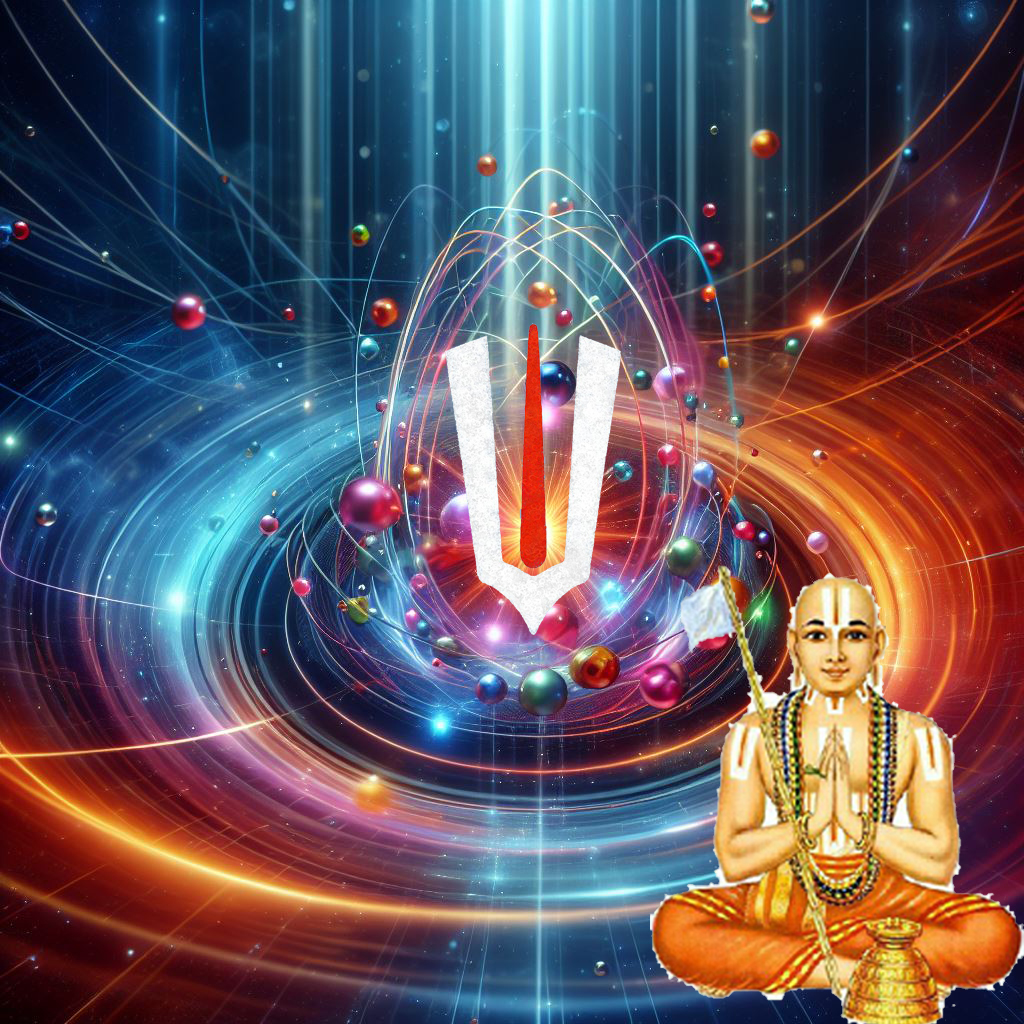
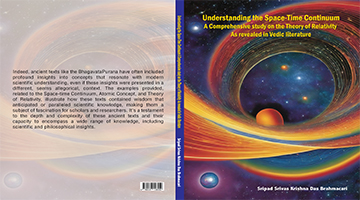












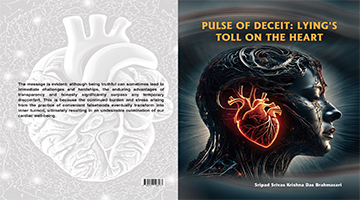

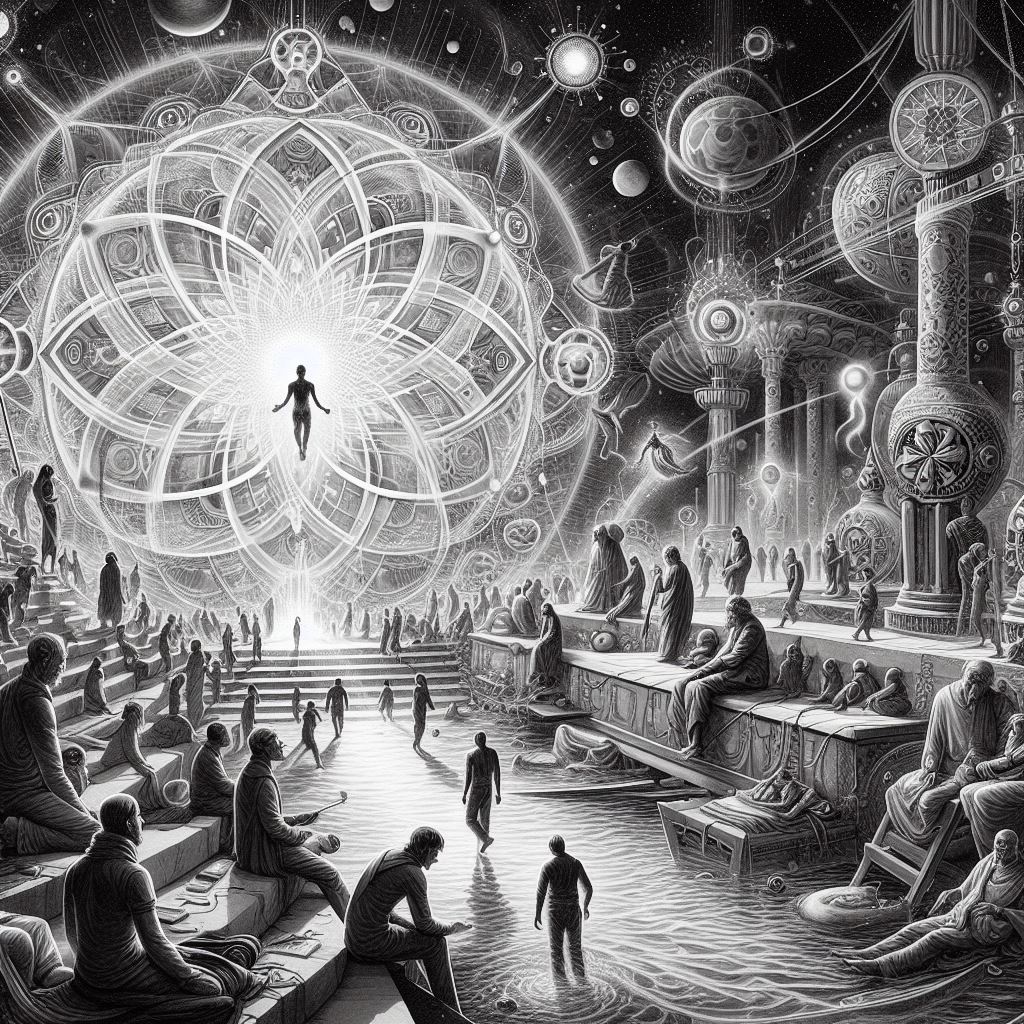
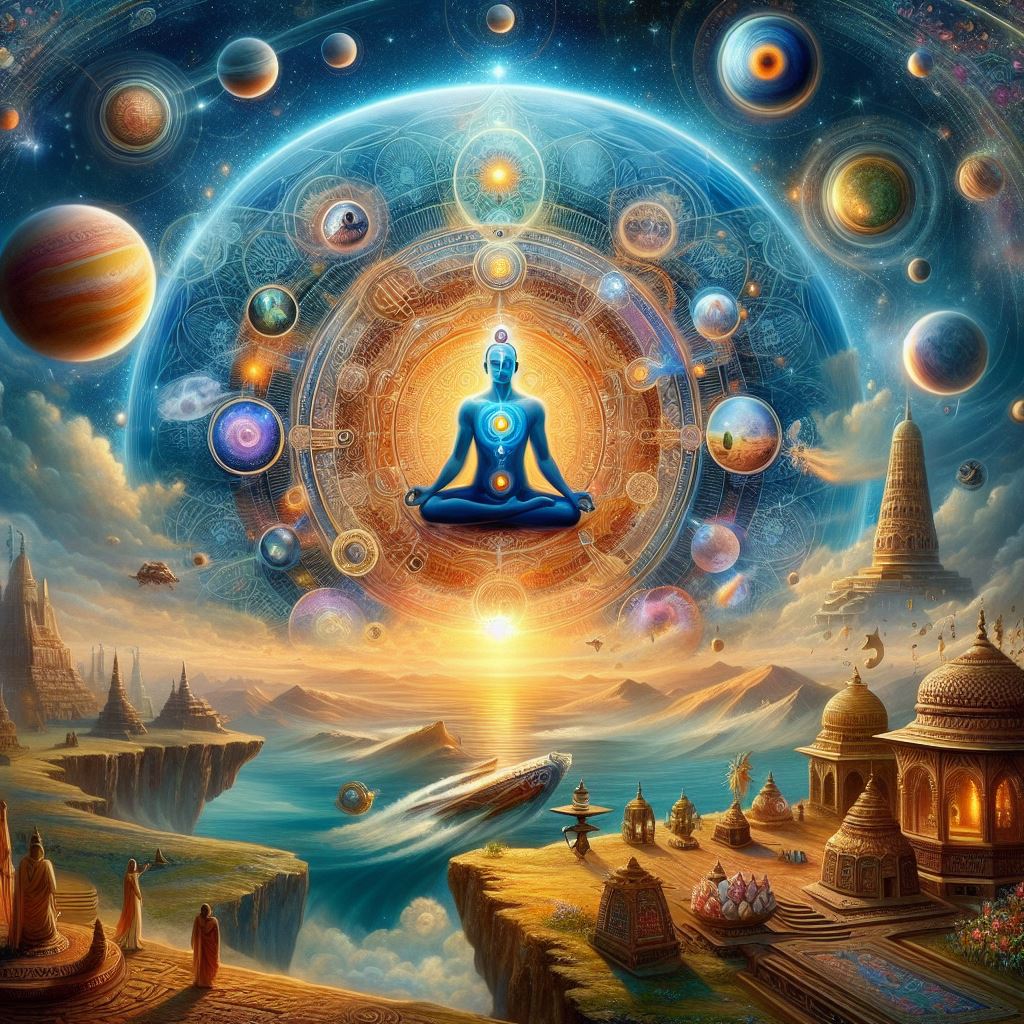





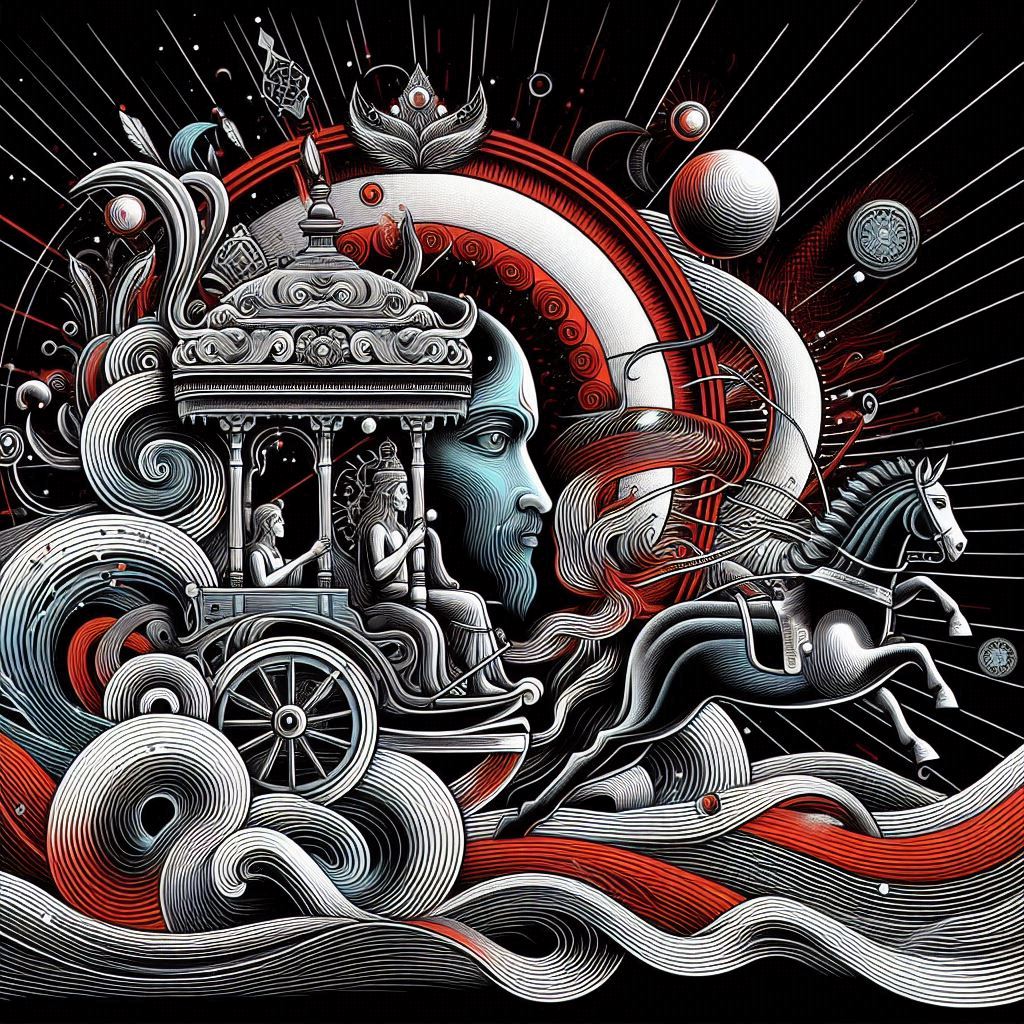
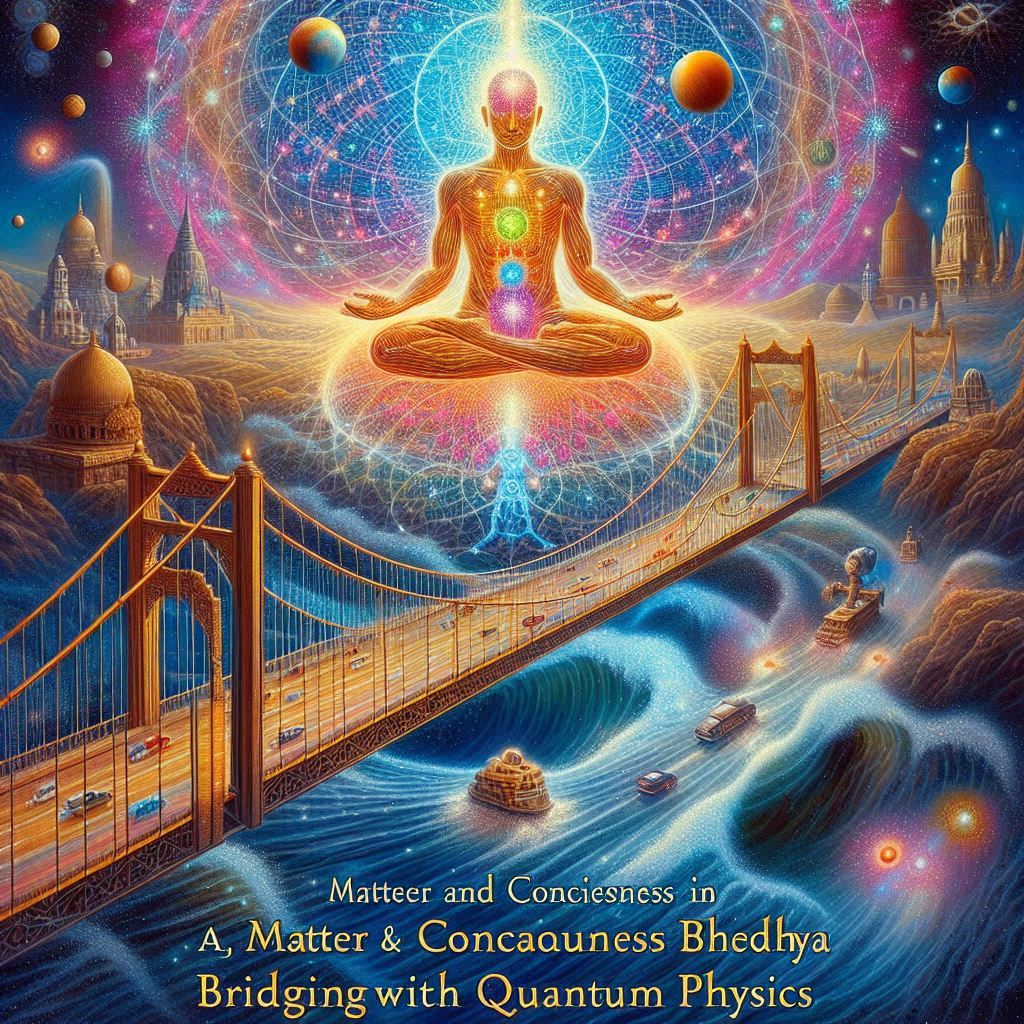
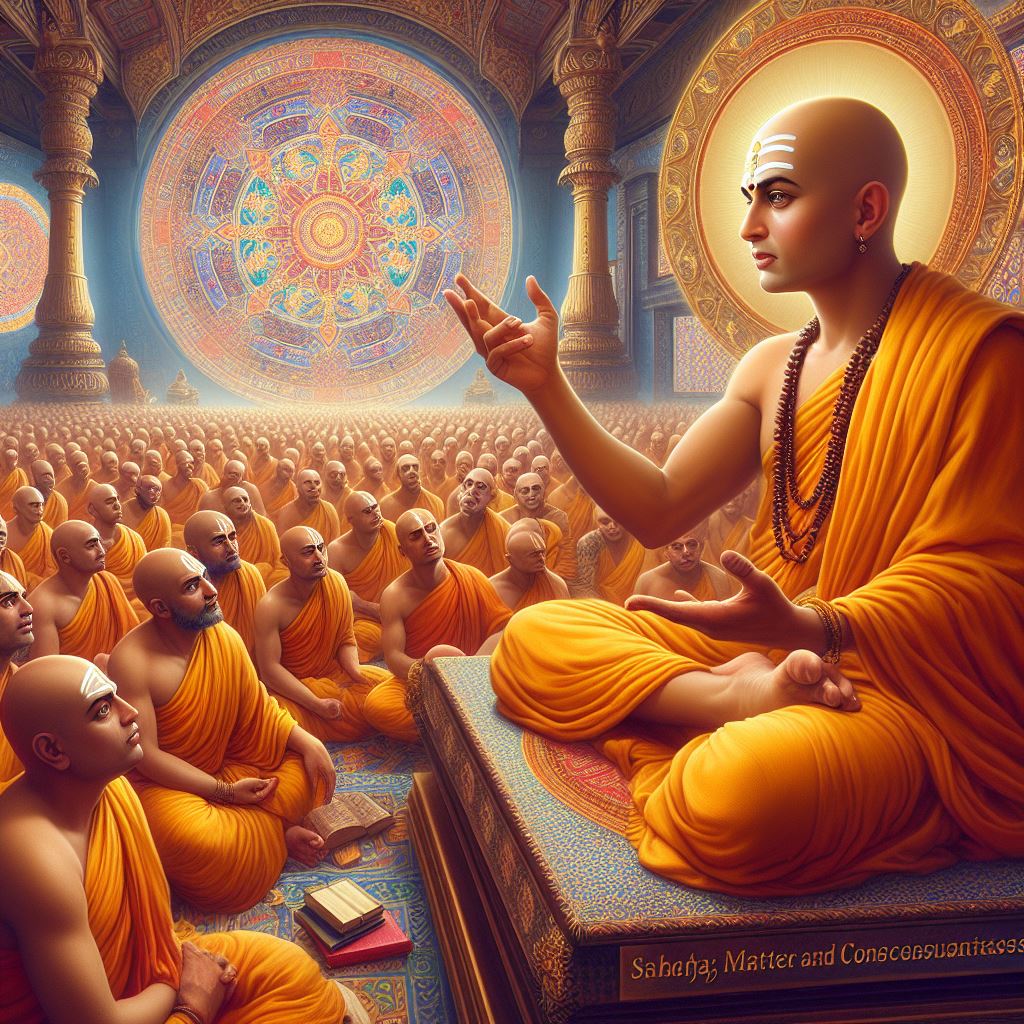
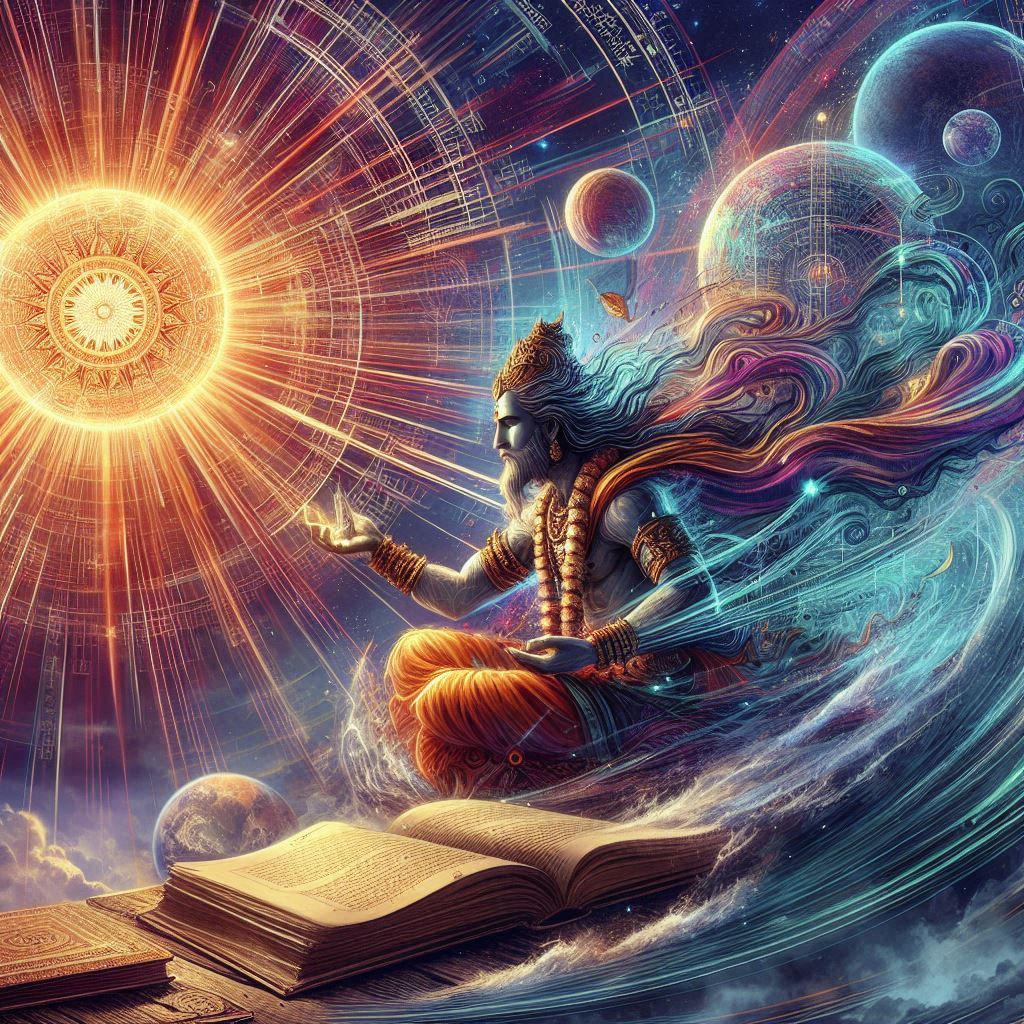
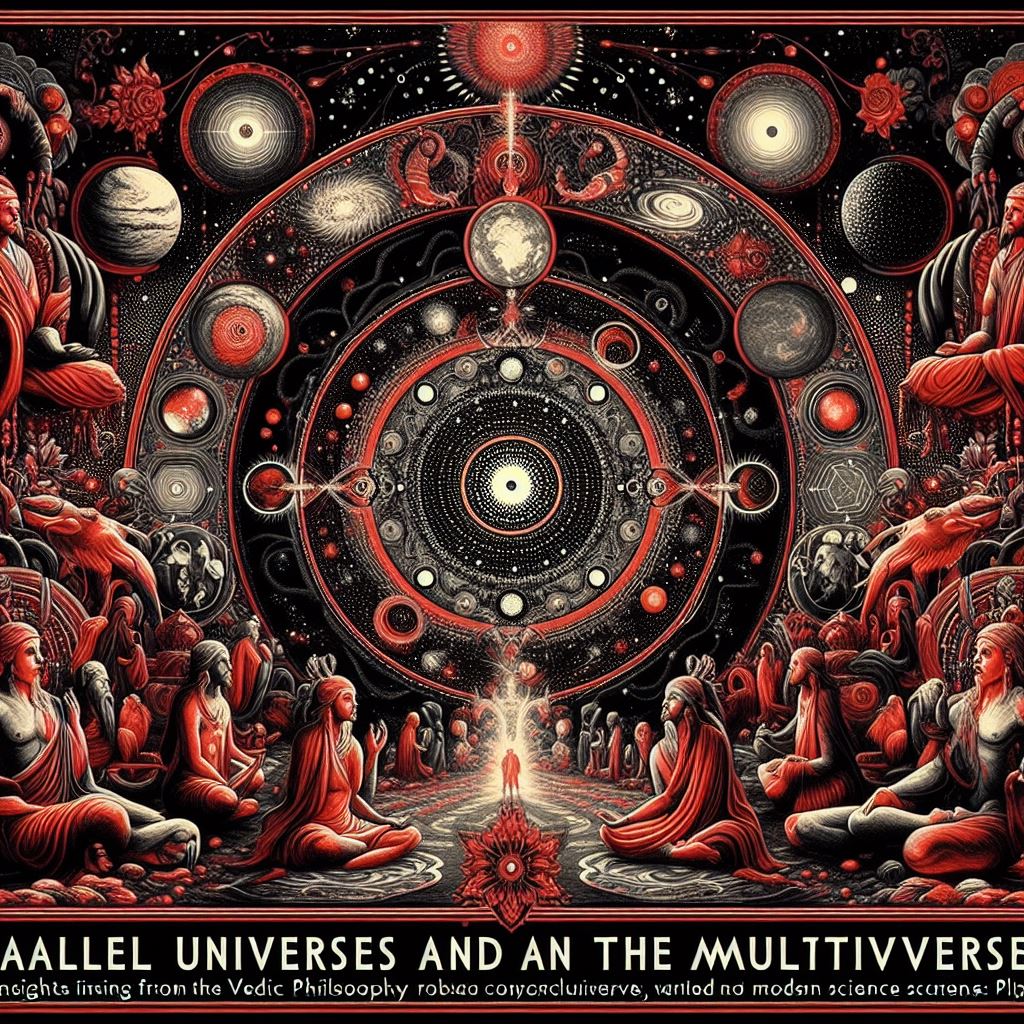
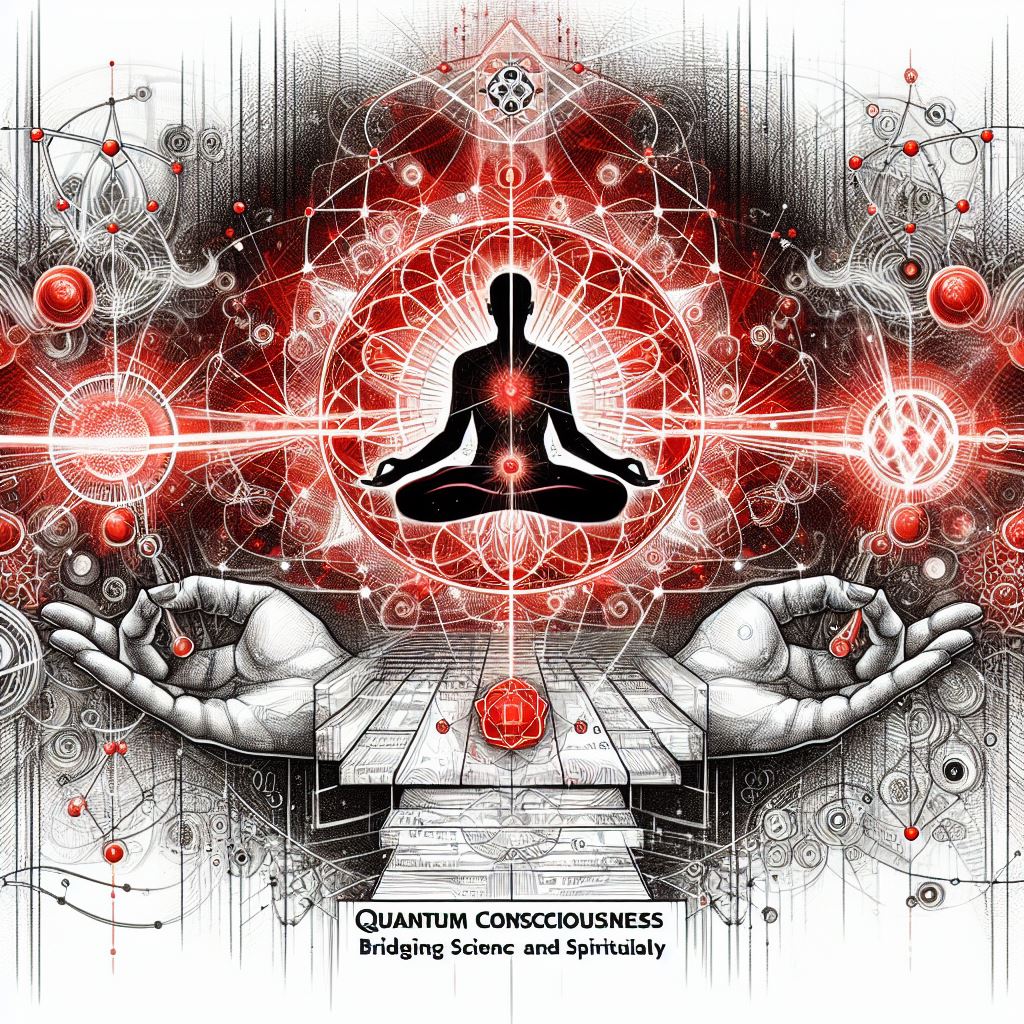


Origin of Science
The Existence of the Soul: Exploring Neuroscience, Quantum Physics and Vedic Philosophy
Temporal Relativity in Vedic Literature: An Interdisciplinary Analysis of Time Dilation Narratives
Acharya Kaṇāda: The Ancient Sage Who Discovered the Atom
Evidence of Vedic Sanātana Hinduism as a Global Dharma
Perception of Quantum Gravity and Field Theory in the Vedas
String Theory as Mentioned in Veda
Sanskrit’s Role in Advancing AI: A Comprehensive Study
The Vedic Model of the Mind: A Contemporary Exploration
Vedic Contributions to Geometry: Unveiling the Origins of Mathematics
Matter and Consciousness in Achintya Bhedābheda: Bridging with Quantum Physics
A Comprehensive Study of Aeroplanes and Aviation in Vedic Literature
Hydrology and the Water Cycle in Vedic Scriptures